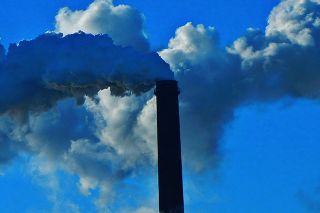
www.buildingsandcities.org/calls-for-papers/climate-justice-the-role-of-the-built-environment.html
Climate Justice: The Role of the Built Environment

Guest editors: Anna Mavrogianni (University College London) and Sonja Klinsky (Arizona State University)
Special issue published 14 July 2020:
Ongoing and future anthropogenic climate change, and our responses to it, could potentially magnify inequities worldwide and much of this will occur within the built environment. For instance, it is expected that low-income communities, individuals that suffer from chronic diseases or social isolation, and other vulnerable populations will be disproportionately affected by climate impacts due to their limited ability to adapt to a warming climate.
Communities, and the people in them, are also likely to face differential implications of climate actions - such as building adaptation or mitigation infrastructure - due to their locations, livelihoods, or socio-economic resources. Some communities may need to abandon their homes and settlements if they become uninhabitable, while others may experience changes due to shifting ideas of desirable neighbourhoods, new rules for building codes or insurance policies, increased stress / hardship, or unintended consequences of other climate actions. How will different people and communities experience these shifts? How could efforts be designed to avoid deepening or actively reduce pre-existing inequalities in wellbeing? What policies and strategies are needed for the evaluating specific interventions at different scales (building, neighbourhood, city, building stock) and how do these interact collectively?
The global community is committed to achieving climate equity as a core requirement. Insufficient capacity for climate change adaptation and unequal distribution of resources will negatively affect the achievement of the UN's Sustainable Development Goals promoting the wellbeing of people in developing countries and low-income communities within wealthy countries. Challenging multi-level inequities both internationally and nationally is, therefore, at the heart of climate change mitigation, adaptation and human development goals.
Moreover, as mitigation action (e.g. "green" building & energy retrofits) is both needed to limit climate impacts and could itself have implications for equity at all scales, mitigation actions must also be examined through an equity lens.
Whilst there has been an increasing recognition of the role the building sector will play in the transition towards a low carbon economy, less attention has been paid to the relationship between buildings and urban design in the context of climate justice. It is widely recognised that the definition, measurement and distribution of climate related burdens are of fundamental importance for distributive justice in climate policy and adaptation practice. Moreover, efforts to design and change the built environment necessarily raise questions about procedural justice. As the built environment is at the heart of the lives of people and communities and is central to climate adaptation and mitigation, a deeper understanding of the justice implications of efforts to change or maintain the built environment in the context of climate change is essential.
Despite the obvious intersection between the built environment and issues of climate justice, these issues are often addressed separately. For example, despite the increasing concerns about air pollution and overheating in summer, such issues are rarely framed as energy or energy poverty issues. In addition, the majority of studies aiming to quantify the impact of climate change on energy use, comfort, health and wellbeing do so at the building stock level without incorporating social aspects that may magnify risks for health and wellbeing. Similarly, justice implications of decision-making about the planning, design, construction, operation and alteration of built environment in the context of climate change could occur at all stages of the life cycle. For example, this includes the labour conditions for working under extreme or stressful conditions during the construction / renovation process.
Meanwhile, the recent rise of the political economy of 'wellness' and the wellbeing agenda among building designers and urban planners in affluent countries raises new questions about how health and wellbeing are linked with entitlements of wealth, social status and privilege. However, this raises further questions about how these (and other) concerns apply to people in less affluent areas within developed countries and the global south. The continued growth of informal settlements raises multiple questions about adaptation and mitigation options and their justice ramifications for vulnerable or poor communities.
This Special Issue will specifically explore the role our built environment plays in the climate change and inequity nexus. It seeks to examine the full implications of the built environment on social inequities and human development in the context of climate change: how might climate change or climate policies exacerbate these problems, what the scale of this is likely to be, and what policies, strategy solutions, resources and capabilities may be required to manage these concerns within and between countries. Possible topics for research or policy analysis papers include, but are not limited to:
- Spatial variations of health inequalities and inequities , and the impact of climate change projections, including risks associated with extreme temperatures, flooding, drought, disease vectors, etc.
- Climate change, urbanisation trends, urban health and resilience
- Unintended consequences and co-benefits of climate change mitigation and adaptation strategies in the building sector, with a focus on those targeting low income settings (in different settings: developed countries, the global south, informal settlements, etc)
- Demographic impacts of climate change on the distribution of fuel poverty, inequities in energy policy, and the potential rise of summer fuel poverty in previously heating-dominated climates
- Thermal comfort and air quality in Buildings and Cities: synergies and conflicts between strategies
- Urban planning: interrelationships between local urban climate characteristics, green/blue infrastructure, fuel poverty, climate-related health risks
- GIS-based mapping approaches to develop climate-related vulnerability risk indices and/or neighbourhood level measures of wellbeing that include social deprivation factors
- Older and ageing populations: the influence of housing design on climate-related health risks
- Climate change adaptation : of social housing, care homes, extra care settings, healthcare environments, and school buildings
- Multidimensional wellbeing metrics : analysed in relation to physical environment factors and linked to human development factors
- Technology-oriented policies and technology transfer: initiatives for climate change adaptation
- Policy analysis of current programmes : for energy efficiency and climate adaptation - who benefits, who is excluded?
- Policy principles: underpinning what city, regional & national governments can do to protect the vulnerable and reduce inequities
- Evaluation of international climate agreements : from the perspective of built environment adaptation
- Emergency interventions : during extreme climate events, including definitions of vulnerability (demographics, location, building characteristics), and physical, social and organisational actions to reduce harm
- Community collapse, relocation and migration: as a result of ongoing climate change
- The role of built environment design in encouraging healthy and environmentally sustainable behaviours
- Comparison of top-down vs. bottom-up measures (self-organising): evaluation of the potential of social networks and local empowerment to provide resilience
- Assessment of international responsibilities : wealthier countries with high levels of GHG emissions to the most vulnerable countries
- Identification of diverse actors and roles required to implement multi-scalar and multi-locational aspects of equity, and the processes and strategies needed for stakeholder involvement (from local project level up to the international community)
- Measures and assessments needed for ascertaining policy 'success': in the development of equity & the reduction of disadvantage
- Necessary capabilities and skilling for local communities, professionals, NGOs and government officials
- Translational interdisciplinary research and knowledge exchange with vulnerable communities, policymakers, local authorities and other organisations aiming to convert academic research outputs into action to tackle climate related risks
- New methods that identify vulnerable or at-risk people to specific threats and locations (construction labour, building occupants, neighbourhoods, informal settlements, etc)
- Institutional procedures and capabilities (policy, strategy, planning, implementation)
- Educational curricula development (planners, architects etc.)
Briefing Note for Contributors
You are invited to submit an abstract for a journal paper in this special issue of Buildings and Cities. In the first instance, please send a 500 word (maximum) abstract defining the scope, methods and results to Richard Lorch by MONDAY 15 JULY 2019. The initial submission must include:
- the author's and all co-author's names, affiliations and contact details
- the question(s) in this Call for Papers that the abstract and intended paper addresses
- the abstract (300 - 500 words maximum)
Abstracts will be reviewed by the editors to ensure a varied, yet integrated selection of papers around the topic of the special issue. Authors of accepted abstracts will be invited to submit a full paper (6-7500 words), which will be subject to a double-blind review process.
Timeline
Deadline for abstract submission: 15 July 2019
Full papers due: 01 November 2019
Referees' comments: 15 February 2020
Final version due: 01 May 2020
Publication: July 2020
Buildings and Cities
Buildings and Cities is an international, open access, double-blind peer-reviewed academic journal. Its focus is on buildings and cities by understanding their supporting social, economic and environmental systems. More information including its Aims & Scope and Editorial Board can be found online: www.buildingsandcities.org
Questions?
If you have a question, please contact: Richard Lorch and Sonja Klinsky
Key reading
Klinsky S. & Winkler H., 2014. Equity, sustainable development and climate policy. Climate Policy, 14(1): 1-7.
Lindley S., O'Neill J., Kandeh J., Lawson N., Christian R. & O'Neill M., 2011. Climate change, justice and vulnerability. York, UK: Joseph Rowntree Foundation.
Rees, W. 2009. The ecological crisis and self-delusion: Implications for the building sector. Building Research & Information, 37(3): 300-311.
Vale L., 2013. The politics of resilient cities: whose resilience and whose city? Building Research & Information, 42(2): 191-201.
Vardoulakis S., Dimitroulopoulou C., Thornes J., Lai K.-M., Taylor J., Myers I., Heaviside C., Mavrogianni A., Shrubsole C., Chalabi Z., Davies M., Wilkinson P. & Haines A., 2015. Impact of climate change on the domestic indoor environment and associated health risks in the UK. Environment International, 85: 299-313.



Latest Commentaries
COP30 Report
Matti Kuittinen (Aalto University) reflects on his experience of attending the 2025 UN Conference of the Parties in Belém, Brazil. The roadmaps and commitments failed to deliver the objectives of the 2025 Paris Agreement. However, 2 countries - Japan and Senegal - announced they are creating roadmaps to decarbonise their buildings. An international group of government ministers put housing on the agenda - specifying the need for reduced carbon and energy use along with affordability, quality and climate resilience.
Building-Related Research: New Context, New Challenges
Raymond J. Cole (University of British Columbia) reflects on the key challenges raised in the 34 commissioned essays for Buildings & Cities 5th anniversary. Not only are key research issues identified, but the consequences of changing contexts for conducting research and tailoring its influence on society are highlighted as key areas of action.